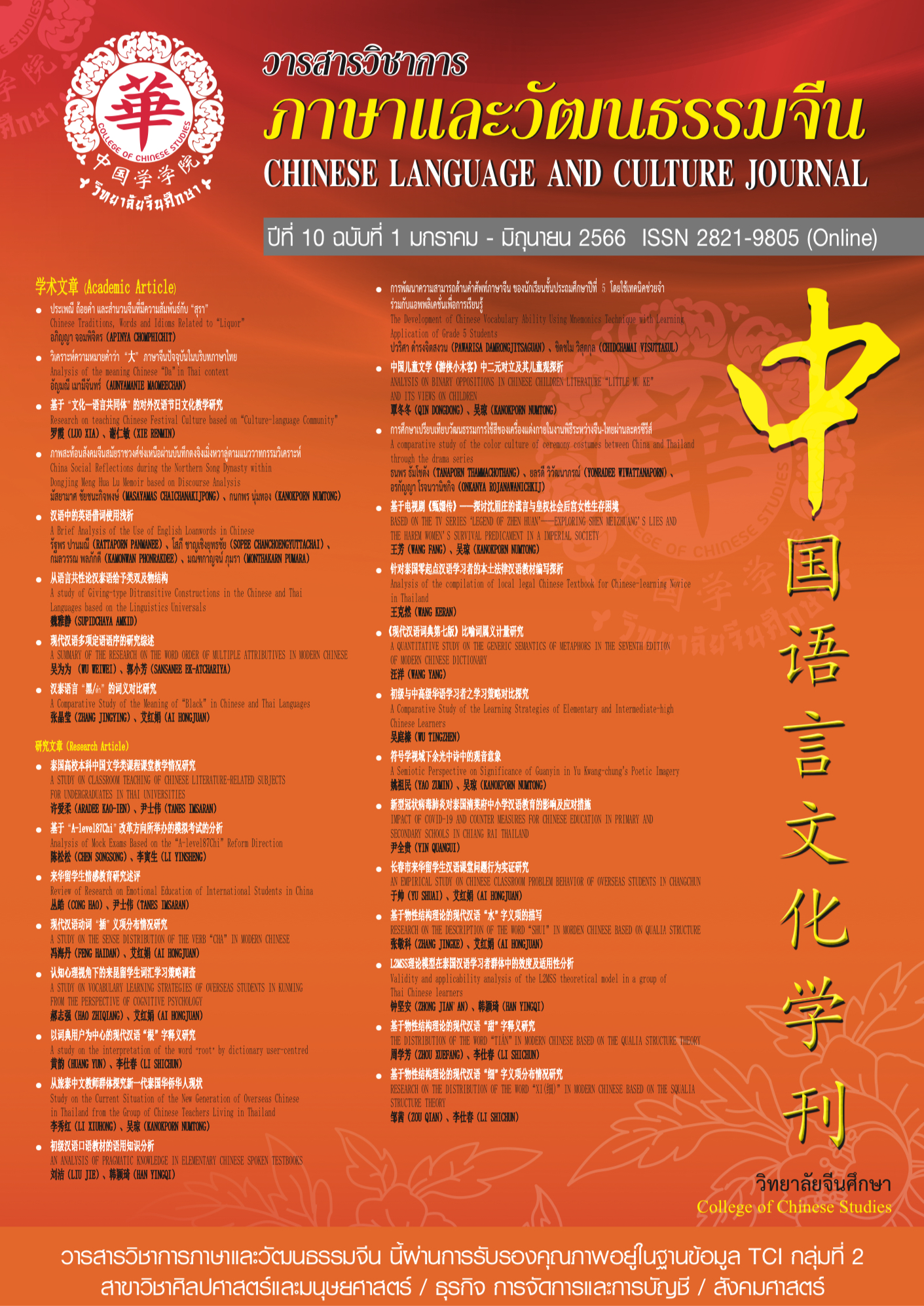A Comparative Study of the Learning Strategies of Elementary and Intermediate-high Chinese Learners
Keywords:
Language learning strategies, Chinese learning strategies, Comparative studyAbstract
This research investigates the comparison for the patterns of language learning strategy employed by two groups, elementary Chinese language learners and intermediate-high Chinese language learners from two universities in Taiwan. To reach this objective, Oxford’s Strategy Inventory of Language Learning (SILL) (1990) is selected as a research method. Through this research, we can understand the performance and comparison of Chinese language strategies between elementary and intermediate-high learners, and understand the differences, changes and reasons for the use of strategies by learners at different stages.
The results of the research present the level of strategies used by elementary learners is slightly higher than the intermediate-high learners, but the difference is not significant; the biggest difference in the frequency of use between the two groups is "Metacognitive Strategies". This strategy is commonly used by elementary learners but rarely used by intermediate-high learners since it emphasizes on using assessment to evaluate their level of learning. However intermediate-high learners have focused their learning on language application rather than tests; The minor difference in frequency of use is "Cognitive Strategies". Learners at both levels understand that increase of frequency of use in Chinese can strengthen their understanding of Chinese. It is hoped that the results of this research can be used as teaching guidance and curriculum design to develop Chinese language strategy teaching for students of all levels in the future; also to guide elementary learners to understand the strategies commonly used by intermediate and advanced learners, and help students in the transformation of strategies for improving language skills.
References
江新. 华语作为第二语言学习策略初探. [J]. 语言教学与研究,2000,(1):61–68。
李咏吟. 认知行为的学习策略对国中学习者学业成绩的影响. [J]. 国立彰化师范大学辅导学报,1987,10:199–320
李咏吟. 学习辅导-学习心理学的应用. [M]. 台北:心理出版社,2001. 211 –250
林青蓉. 波兰零起点大学习者华语学习策略之探究:以 SILL5.1 量表为检测工具:[硕士学位论文].[D]. 高雄:高雄师范大学华语文教学研究所, 2014
彭妮丝. CFL学习者华语文文化认知与语言学习策略探究. [J]. 台北市立大学学报人文社会类,2016,47:17–37。
苏旻洵(译). 语言学习策略手册. [M]. 台北:寂天文化出版社,2007. 2–9
吴勇毅. 不同环境下的外国人华语学习策略研究:[博士学位论文].[D]. 上海:上海师范大学语言学及应用语言学,2007
信世昌. 华语文阅读策略之教程发展. [M]. 台北:五南出版社,2020. 34 –36
张新仁. 学习策略的知识管理. [J]. 教育研究与发展期刊,2006,2(2):19–42。
Brown, H. D.. Principles of language learning and teaching (5th ed.). [M]. White Plains, NY: Pearson Education, 2007.
Oxford, R. L.. Language learning strategies: What Every Teacher Should Know (1st ed.). [M]. New York: Newbury House., 1990.
Rubin, J. Learner Strategies: Theoretical Assumptions, Research History and Typology. [C]. In: Wenden, A.L. and Rubin, J., eds. Learner Strategies in Language Learning. NJ: Englewood Cliffs, 1987.15-30.
Downloads
Published
How to Cite
Issue
Section
License
Copyright (c) 2023 Chinese Language and Culture Journal

This work is licensed under a Creative Commons Attribution-NonCommercial-NoDerivatives 4.0 International License.
บทความที่ได้รับการตีพิมพ์เป็นลิขสิทธิ์ของวารสารภาษาและวัฒนธรรมจีน มหาวิทยาลัยหัวเฉียวเฉลิมพระเกียรติ
บทความใน “วารสารวิชาการภาษาและวัฒนธรรมจีน” เป็นทรรศนะของผู้เขียนโดยเฉพาะ กองบรรณาธิการไม่มีส่วนในความคิดเห็นในข้อเขียนเหล่านั้น




